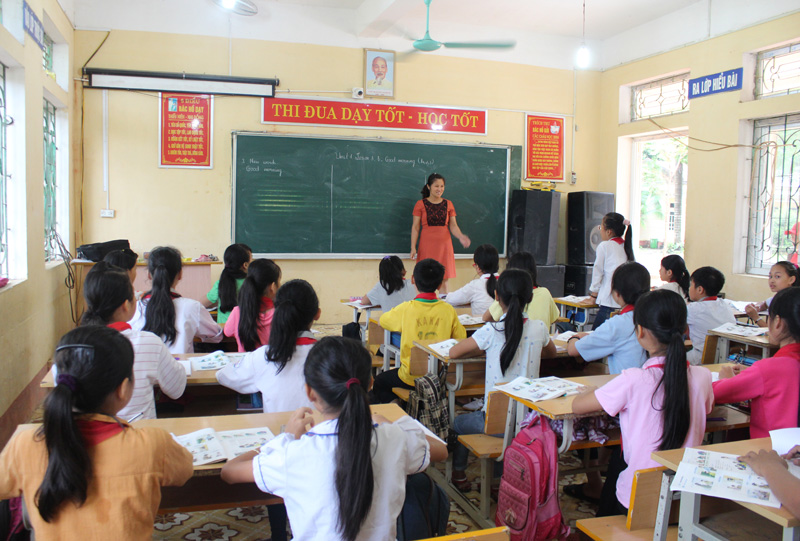
(HBO) - Luong Son is now the only locality in the province to merge all of its secondary and high schools. Thereby, the number of its schools has decreased from 70 to 43.

After merger, Tan Thanh
second and high school has 33 classes with 942 students.
The merger of schools helps
streamline staff (down 21 management officials, 8 teachers and 4 employees). It
continued to streamline management and teaching staff in several fields such as
library, equipment, archive, treasury, health care and accounting while
arranging redundant teachers due to merger to those lacking them; reduce
imbalance in staff among schools, use and arrange them more harmoniously and
properly. Additionally, fund for school infrastructure has been earmarked. The
merger of schools helps deal with difficulties in the past academic years,
especially redundancy and lack of classrooms in the same area while effectively
using existing teaching aids and equipment. Several schools have been invested in
line with regulations after mergers. It also reduces cost to build functional
facilities for 2-3 schools, thus pooling more resources to build
national-standard schools. During 2017-2018, six secondary and high schools
were recognised as national-standard schools in Luong Son, including three
merging in one - Tan Thanh secondary and high school.
Chief of the district’s
education and training office said the merger caused difficulties in arranging
staff due to fewer classes, so that the allocation of teachers for 19 classes
per week at secondary level and 23 classes per week at elementary level
(including teachers major in fine arts, music and foreign languages at two
education levels) easily cause confusion in assigning teaching periods and
class allowances. The basic professional activities remain separate at two
levels without proper coordination to improve teaching quality between
elementary and secondary levels and vice versa./.
The emulation movement "Hoa Binh joining hands to build new-style rural areas” has been widely spreading, becoming a driving force that motivates the localities to renew rural landscapes and improve the material and spiritual lives of the residents. In this movement, the people play a central role-both as the main implementers and direct beneficiaries of its outcomes.
In response to the global digital revolution, Hoa Binh Newspaper is transforming itself into a modern and multi-platform media hub, blending cutting-edge technology with a restructured newsroom and a new generation of tech-savvy journalists.
Hoa Binh province’s Association of the Elderly recently held a conference to review the project on expanding the inter-generation self-help club model until 2025.
In a move to implement Resolution No. 57-NQ/TW, issued on December 22, 2024 by the Politburo, which targets breakthroughs in science-technology development, innovation, and digital transformation, the Hoa Binh provincial Department of Health has issued a plan to roll out the "Digital Literacy for All” campaign within the local health sector.
An Nghia Commune (Lạc Sơn District) is one of the communes that achieved the tha standard of the national new rural area in 2018. Entering a new development phase, the commune is now trying to meet the criteria for the advanced new rural development. With the strong political will and the public consensus, the commune is gradually overcoming the challenges to reach this goal, aiming for the sustainable development.



